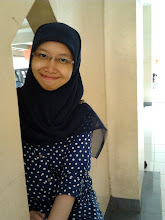Knowledge Management (KM) Processes in Organizations - Chapter 3 -
Chapter 3
Theorizing Knowledge in Organizations
To better understand the notion of “managing” knowledge, there is a
need to better understand what it is about knowledge flow in organizations that
lends itself to any form of management.
The literature has discussed organizational knowledge both as a
resource [Grant, R., 1996] and a process of learning [Argyris and Schon, 1978, Senge, P., 1990],
often emphasizing one aspect over the other.
In the resource view, knowledge is conceptualized as an
object that exists largely in formal documents or online artifacts amenable to
organizing and manipulation.
The process view, on the other hand,
largely emphasizes the emergent nature of knowledge that is often embedded
within a person or within organizational routines, activities, and outcomes, or
arises from the interplay of persons and existing information or knowledge.
While both perspectives may vary significantly in terms of the scope
for the “management” of knowledge, it is still worth exploring the issues and debate
surrounding the practice of creating, gathering, and sharing knowledge within
organizations.
KNOWLEDGE AS RESOURCE AND PROCESS
The knowledge that the firm possesses is a source of sustainable
competitive advantage, and is, accordingly, regarded as a strategic resource of
the firm in need of management attention.
Through the process view, organizations are thought of as
information processing and knowledge generating systems [Grant, R., 1996].
Baumard, P. [1999] proposes looking at knowledge in organizations
along two dimensions: tacit-explicit versus
individual-collective. He defines four quadrants in which knowledge
types are situated:
- tacit-individual (intuitiveness),
- tacit-collective (social practice),
- explicit-individual (expertise), and
- explicit-collective (rules).
INTERACTIONS FORKNOWLEDGE CREATION
While knowledge itself may be perceived as a resource, its creation
occurs through human interactions, whether physical or virtual.
A communication and interaction perspective have argued that through
discourse and dialectics, individuals shape and re-shape the thought processes
of others, eventually leading to a situation of negotiated ormutually
co-constructed reasoning for action and knowledge [von Krogh et al.,1998]
Sense-making [Weick, K.,1995] is then seen as an activity that
reaffirms whether the decisions and actions taken are rational in hindsight,
constituting the “knowledge” that is created.
Nonaka and Takeuchi [1995] in their seminal work have also alluded
to knowledge creation as a process of socialization that is predicated on the
need for direct social interactions. Nonaka and Takeuchi are the most prominent
theorists in the knowledge management domain. Their SECI (Socialization,
Externalization, Combination, Internalization) model posits a spiral-type
process in which knowledge goes from within a person’s own knowledge store to a
more explicit state that can be shared socially with others.
ACTIVITY AS CONTEXT
Blackler, F. proposes that knowledge can be observed as emerging out of the tensions that arise within an organization’s activity systems, that is, among individuals and their communities, their environment (rules and regulations), and the instruments and resources that mediate their activities.
Through immersion in joint activity, individuals in organizations gain tacit knowledge, the sharing of which occurs as a result of the mutual participation [Tsoukas, H., 1996].





0 comments:
Post a Comment